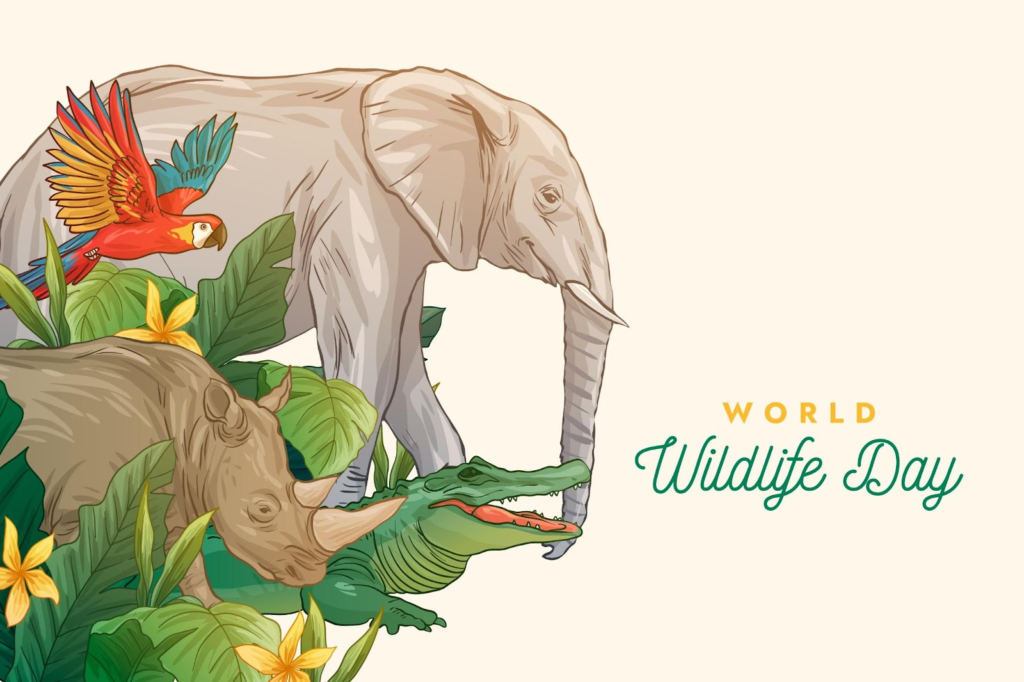
Table of Contents
- Introduction: The Warming Whisper of Change
- The Disappearing Homes of the Wild
- Shifting Seasons and Confused Creatures
- Ocean Blues: When the Sea Turns Hostile
- The Chain Reaction: Predators, Prey & Balance
- Human Footprints on Fragile Paths
- What We Can Do: Turning the Tide
- Conclusion: A Shared Planet, A Shared Responsibility
1. Introduction: The Warming Whisper of Change
Imagine a forest where snow used to fall thick and steady. Now, the frost is late, the rivers are warmer, and animals move in strange patterns. This isn’t fiction—this is climate change at work. Slowly, almost silently, it is redrawing the boundaries of where and how wildlife survives.
2. The Disappearing Homes of the Wild
From the icy Arctic to lush tropical forests, habitats are vanishing. Polar bears tread thinner ice every year. Orangutans lose rainforests to fires and floods. Coral reefs bleach into ghostly white skeletons. As temperatures rise, these homes—finely balanced ecosystems—are becoming uninhabitable.
3. Shifting Seasons and Confused Creatures
Nature’s clock is out of sync. Birds migrate earlier. Flowers bloom before pollinators arrive. Bears wake from hibernation too soon. These timing mismatches can lead to food shortages, missed mating seasons, and survival risks for entire species.
4. Ocean Blues: When the Sea Turns Hostile
Beneath the surface, the sea is also suffering. Warmer waters and acidification are stressing marine life. Fish flee to cooler regions, disrupting food chains. Turtles hatch on hotter sands and more females are born—tipping the gender balance dangerously.
5. The Chain Reaction: Predators, Prey & Balance
In nature, everything is connected. When one species declines, others feel the ripple. A missing frog population means more mosquitoes. Fewer bees affect crops and wildflowers alike. Predators lose prey, and ecosystems falter. Climate change doesn’t just pick victims—it pulls threads from the entire web of life.
6. Human Footprints on Fragile Paths
Our roads, factories, and cities slice through animal territories. As we expand, wildlife gets squeezed into shrinking patches. Add in droughts, storms, and heatwaves intensified by climate change, and survival becomes even harder for wild species already under pressure.
7. What We Can Do: Turning the Tide
It’s not too late. Here’s how we can help:
- Protect and restore habitats: Rewilding forests, wetlands, and coastal areas gives animals space to adapt.
- Reduce carbon footprints: Switch to renewable energy, eat sustainably, and travel mindfully.
- Support conservation efforts: Donate, volunteer, or spread awareness about wildlife organizations.
- Push for policy changes: Advocate for climate action, cleaner energy, and stricter environmental laws.
- Educate and inspire: Every conversation about climate counts. Awareness leads to action.
8. Conclusion: A Shared Planet, A Shared Responsibility
Wildlife doesn’t have a voice to protest rising temperatures. But we do. Climate change may be the greatest threat life on Earth has faced—but it also gives us a chance to rise, protect, and preserve. Because in saving wildlife, we’re saving the essence of Earth itself.

